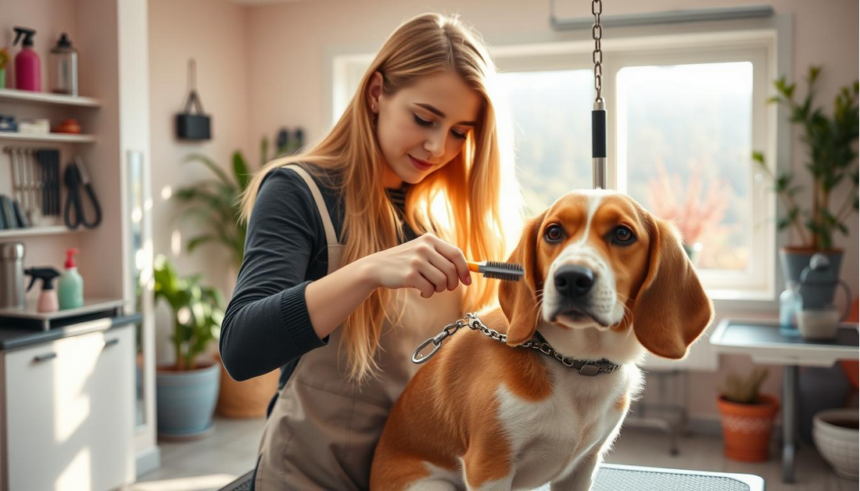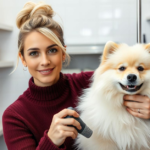India customers to view on amazon.in
Pet Hygiene: Bathing, Grooming and More
Maintaining good pet hygiene is crucial for the health and happiness of your furry friends. Regular practices such as bathing and grooming not only keep your pets clean but also prevent various health issues.
- The Importance of Pet Hygiene
- Understanding Different Pet Grooming Needs
- Bathing, Grooming and More: Creating Your Routine
- Bathing Basics for Dogs and Cats
- Choosing the Right Bathing Products
- Essential Grooming Tools and Techniques
- Brushes and Combs for Different Coat Types
- Nail Trimming Safety Tips
- Fur Trimming Basics
- Grooming Mistakes to Avoid
- Specialized Hygiene: Ears, Teeth, and Paws
- Top Pet Hygiene Products Worth Investing In
- Professional vs. DIY Grooming
- When to Seek Professional Help
- Setting Up a Home Grooming Station
- Mobile Grooming Services
- Cost Comparison and Considerations
- Situational Pet Hygiene
- Travel Hygiene Tips
- Apartment Living Solutions
- Managing Hygiene for Multiple Pets
- Hygiene for Pets with Special Needs
- Conclusion: Maintaining Your Pet’s Hygiene for a Happier, Healthier Life
- FAQ
- How often should I bathe my dog?
- What is the best way to bathe a cat?
- How can I remove tear stains from my dog’s face?
- What are some signs of poor pet hygiene?
- Can I use human shampoo on my pet?
- How do I clean my dog’s ears?
- What are some benefits of regular grooming?
- How can I keep my pet’s teeth clean?
- What are some common pet grooming mistakes to avoid?
- Can I groom my pet at home, or should I seek professional help?
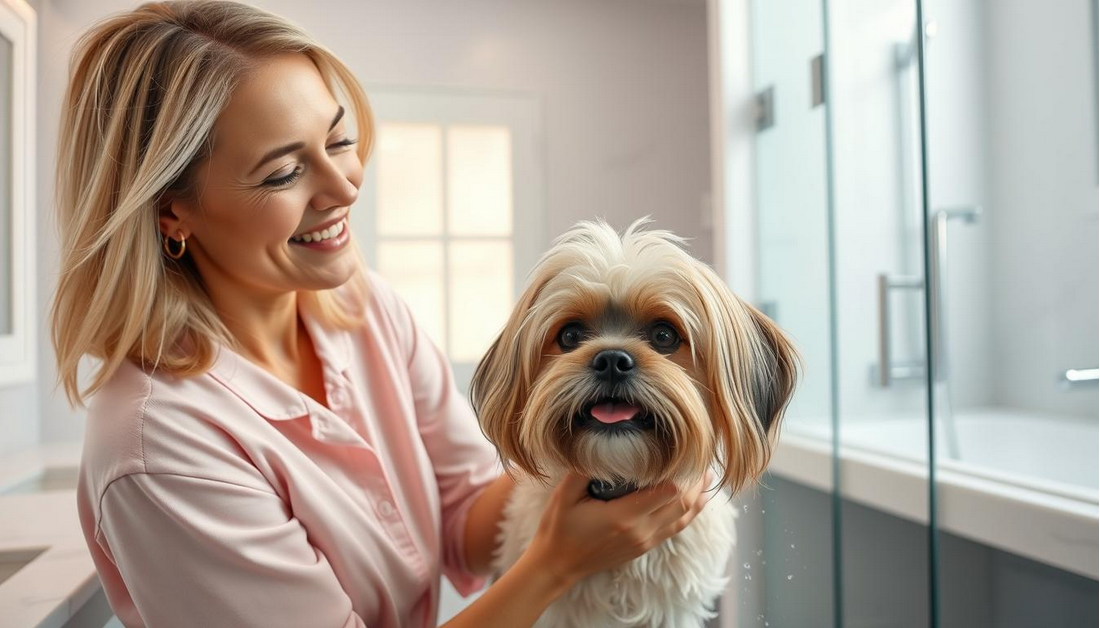
Good pet hygiene involves more than just occasional baths. It includes regular grooming sessions, nail trimming, and ear cleaning, all of which contribute to your pet’s overall well-being. By incorporating these practices into your pet care routine, you can significantly enhance their quality of life.
Key Takeaways
- Regular bathing is essential for maintaining your pet’s cleanliness.
- Grooming sessions help prevent matting and tangling of fur.
- Nail trimming and ear cleaning are crucial for preventing infections.
- Good pet hygiene practices can enhance your pet’s overall health.
- Establishing a regular grooming routine can strengthen the bond between you and your pet.
The Importance of Pet Hygiene
The importance of pet hygiene cannot be overstated, as it directly impacts their quality of life. Maintaining cleanliness is crucial for preventing health issues and strengthening the bond between pets and their owners.
Health Benefits of Regular Grooming
Regular grooming offers numerous health benefits, including the removal of dirt, tangles, and parasites from your pet’s coat. It also helps in distributing skin oils, promoting healthy skin and a shiny coat. Moreover, grooming sessions provide an opportunity to inspect your pet for any signs of illness or injury.
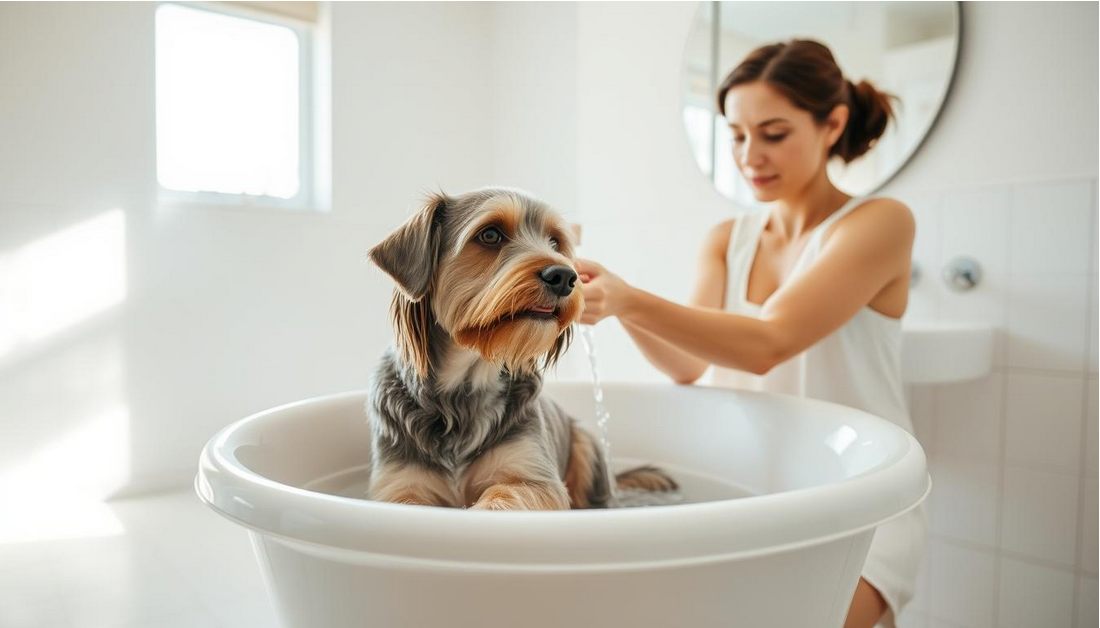
Signs of Poor Pet Hygiene
Identifying signs of poor hygiene is crucial for taking timely action. These signs can include a strong odor, dirty or matted fur, dirty ears, and overgrown nails. Regular inspections during grooming can help detect these issues early.
Building a Positive Hygiene Routine
Establishing a positive hygiene routine involves starting with small, manageable steps. Begin with daily tasks such as brushing your pet’s coat or cleaning their ears. Gradually introduce more thorough grooming sessions as your pet becomes more comfortable with the process.
Consistency is key to making hygiene a positive experience for your pet. Rewarding them with treats and praise during grooming can help build trust and make the process enjoyable for both of you.
Understanding Different Pet Grooming Needs
Pet grooming is not a one-size-fits-all task; it requires a tailored approach based on the pet’s type, breed, and age. Different pets have unique grooming needs that are crucial for their overall health and well-being.
Dogs vs. Cats: Different Approaches
Dogs and cats have distinct grooming requirements. Dogs often need regular baths and haircuts, especially if they spend a lot of time outdoors. Cats, on the other hand, are generally more self-sufficient in their grooming but may still require occasional brushing and nail trimming.
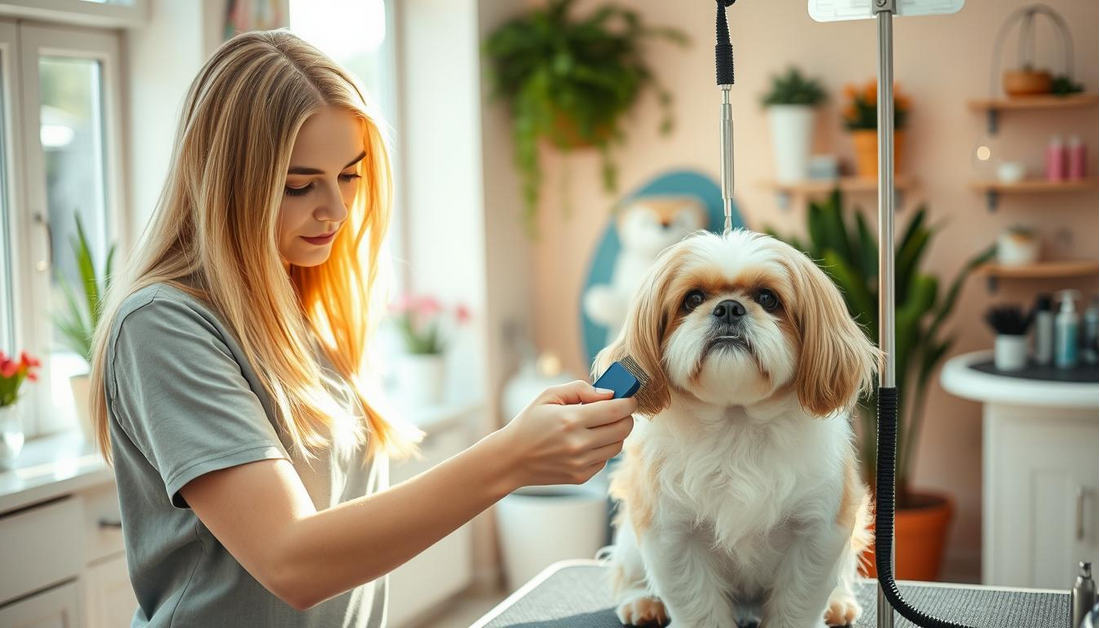
Breed-Specific Considerations
Different breeds have specific grooming needs. For example, long-haired breeds like the Persian cat or the Golden Retriever require regular brushing to prevent matting. Short-haired breeds, however, may need less frequent grooming.
| Breed | Grooming Needs |
|---|---|
| Long-haired (e.g., Persian, Golden Retriever) | Regular brushing, frequent grooming sessions |
| Short-haired (e.g., Beagle, Siamese) | Less frequent grooming, occasional brushing |
Age-Related Grooming Requirements
Pets’ grooming needs change with age. Puppies and kittens require gentle grooming to help them get accustomed to the process. Adult pets have different needs based on their breed and health. Senior pets may need more gentle and less frequent grooming due to potential health issues.
Tailoring your grooming approach to your pet’s specific needs is crucial for their comfort and health. Whether you have a dog or a cat, understanding their grooming requirements can help you provide the best care.
Bathing, Grooming and More: Creating Your Routine
Establishing a pet hygiene routine is crucial for maintaining your pet’s overall health and happiness. A well-structured routine helps prevent health issues, reduces shedding, and strengthens the bond between you and your pet.
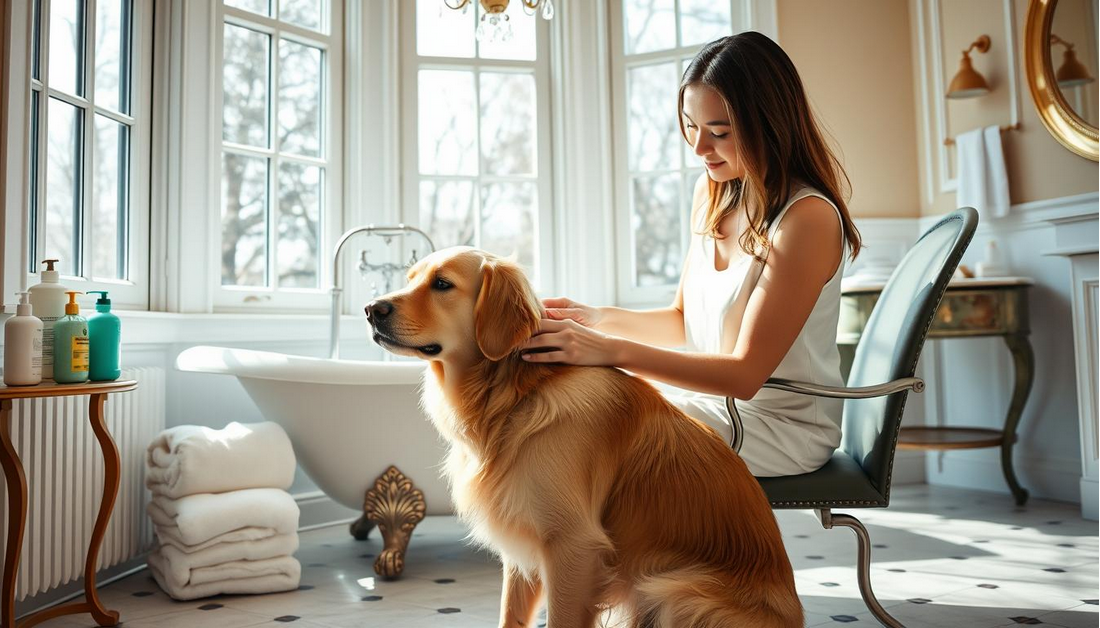
Daily vs. Weekly Hygiene Tasks
Daily hygiene tasks are essential for maintaining your pet’s cleanliness. These tasks include:
- Wiping your pet’s paws after walks
- Brushing your pet’s coat to prevent matting
- Checking for any signs of illness or infection
Weekly tasks are also vital and may include:
- Bathing your pet
- Trimming your pet’s nails
- Cleaning your pet’s ears
Seasonal Grooming Calendar
Seasonal changes can significantly impact your pet’s grooming needs. For example:
- During spring, pets may require more frequent brushing to manage shedding.
- In summer, pets may need more frequent baths to stay cool and clean.
- In winter, pets may require more moisturizing to prevent dry skin.
Creating a seasonal grooming calendar can help you stay on top of these changing needs.
Indoor vs. Outdoor Pets
The distinction between indoor and outdoor pets is crucial when it comes to hygiene routines. Outdoor pets may require more frequent grooming due to exposure to dirt, pollen, and other environmental factors. Indoor pets, on the other hand, may require less frequent bathing but more attention to nail trimming and ear cleaning.
For pets living in apartments, it’s essential to consider pet hygiene for apartment living, which includes regular vacuuming, frequent litter box cleaning, and maintaining a clean living environment.
By understanding the unique needs of your pet based on their living situation, you can create a more effective hygiene routine.
Bathing Basics for Dogs and Cats
Understanding the basics of bathing can significantly improve the hygiene and health of your pet. Bathing is an essential part of pet care that not only keeps your pet clean but also provides an opportunity to inspect their overall health.
How Often Should You Bathe Your Pet?
The frequency of bathing depends on several factors, including the pet’s breed, age, and lifestyle. Generally, dogs require more frequent bathing than cats. For dogs, bathing every 1-3 months is common, while cats may only need bathing every few months unless they get dirty.
- Short-haired dogs: Bathe every 2-3 months.
- Long-haired dogs: May require more frequent bathing.
- Cats: Generally, less frequent bathing is needed, but it depends on their lifestyle and health.
Step-by-Step Bathing Guide
Bathing your pet can be a straightforward process if done correctly. Here’s a simple guide:
- Prepare everything you need before starting.
- Gently wet your pet’s coat.
- Apply a suitable shampoo and lather.
- Rinse thoroughly to remove all soap.
- Dry your pet completely, paying extra attention to their ears.

Alternatives to Traditional Baths
Not all pets require or tolerate traditional bathing. Fortunately, there are alternatives.
Dry Shampoo Options
Dry shampoo can be a great alternative for pets that don’t like water or need a quick clean. It’s available for both dogs and cats.
Waterless Cleaning Methods
Waterless shampoos and cleaning wipes are convenient for maintaining your pet’s cleanliness between baths.
Choosing the Right Bathing Products
Selecting the right bathing products for your pet is crucial for their hygiene and overall health. With so many options available, it’s essential to understand the different types of products and their specific uses.
Pet Shampoos for Different Needs
Different pets have different needs when it comes to shampoos. For instance, pets with sensitive skin require hypoallergenic shampoos that are gentle and free from irritants.
Hypoallergenic Options
Hypoallergenic shampoos are designed to minimize the risk of allergic reactions. They are ideal for pets with skin allergies or sensitivities.
Medicated Formulas
Medicated shampoos contain ingredients that help treat skin conditions such as fungal infections, bacterial infections, or parasites. They are a crucial part of managing certain skin issues in pets.
DIY Pet Shampoo Recipes
For pet owners who prefer a more natural approach, DIY pet shampoo recipes can be a viable option. These recipes often use common household ingredients like oatmeal, coconut oil, and apple cider vinegar.
- Oatmeal shampoo for soothing irritated skin
- Coconut oil shampoo for moisturizing dry coats
- Apple cider vinegar rinse for balancing skin pH
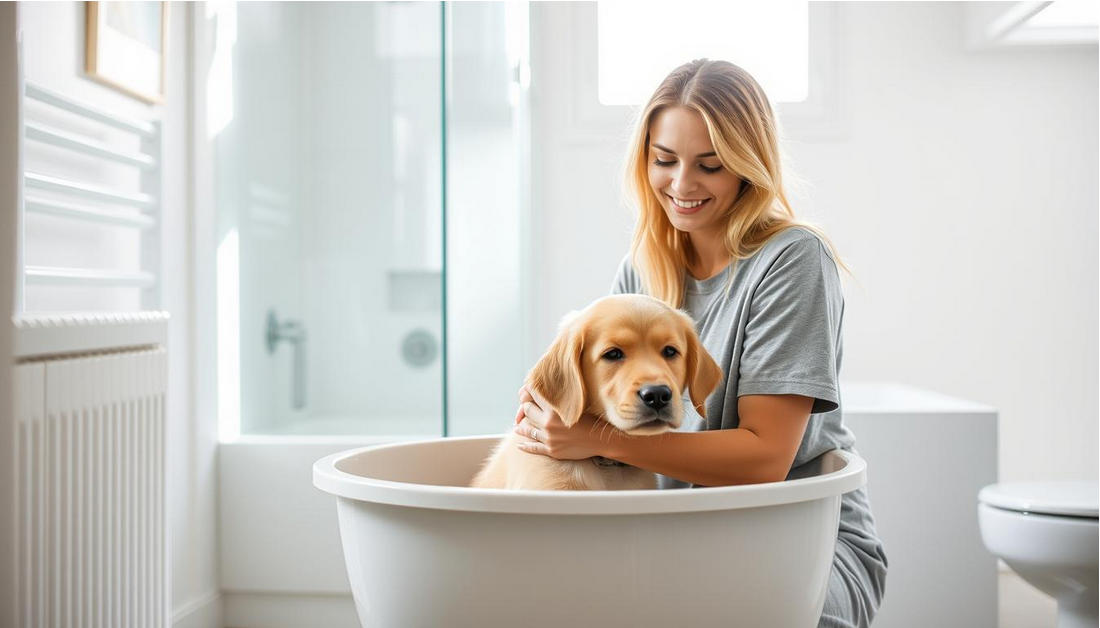
When choosing bathing products, it’s crucial to consider your pet’s specific needs, whether it’s sensitivity, skin conditions, or simply maintaining a healthy coat. Always read labels carefully and consult with your veterinarian if you’re unsure about the best products for your pet.
Essential Grooming Tools and Techniques
To keep your pet healthy and happy, mastering essential grooming tools and techniques is vital. Grooming is not just about aesthetics; it’s a crucial aspect of pet care that impacts their overall well-being.
Brushes and Combs for Different Coat Types
Choosing the right brush or comb for your pet’s coat type is fundamental. For instance, slicker brushes are ideal for long-haired pets as they help detangle fur, while bristle brushes are better suited for short-haired pets, enhancing their coat’s shine.
| Coat Type | Recommended Brush/Comb |
|---|---|
| Long-Haired | Slicker Brush, Wide-Tooth Comb |
| Short-Haired | Bristle Brush, Rubber Brush |
| Curly/Wavy | Pin Brush, Slicker Brush |
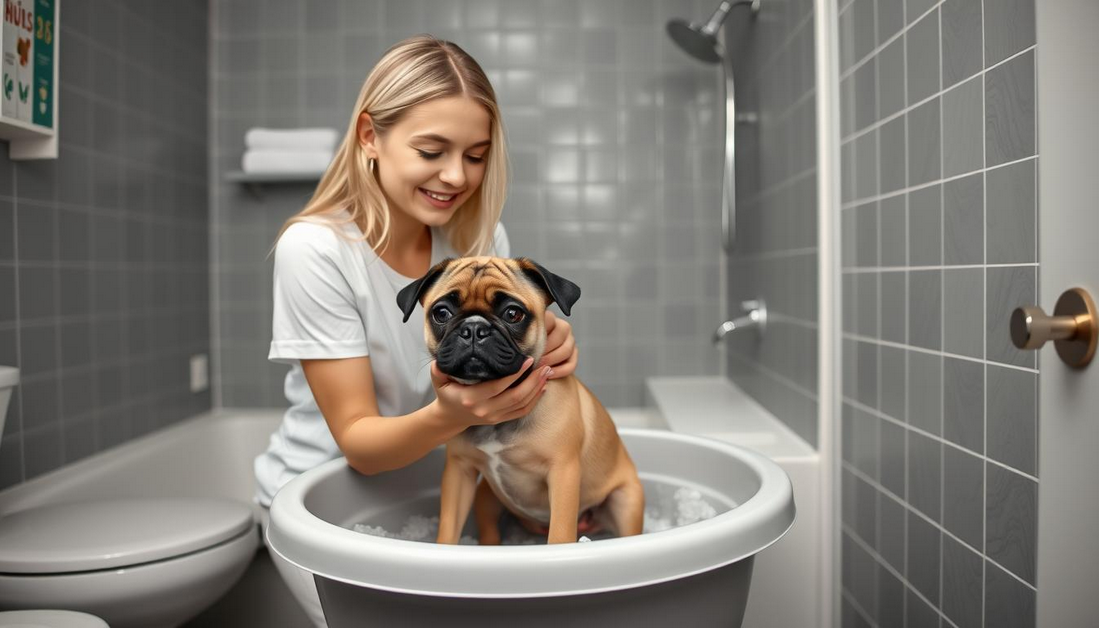
Nail Trimming Safety Tips
Nail trimming is a critical grooming task that requires caution. To avoid hurting your pet, it’s essential to use the right nail clippers and to trim just the tip of the nail, avoiding the quick.
Fur Trimming Basics
Fur trimming can be a daunting task for many pet owners. However, with the right tools and a bit of practice, it can be done safely at home. Start by investing in good-quality clippers and learning the correct technique to avoid uneven cuts.
Grooming Mistakes to Avoid
Common grooming mistakes include over-bathing, which can strip your pet’s coat of its natural oils, and not trimming nails regularly, leading to overgrowth. Being aware of these potential pitfalls can help you groom your pet more effectively.
By mastering these essential grooming tools and techniques, you can significantly improve your pet’s health and happiness. Regular grooming not only keeps your pet looking their best but also provides an opportunity to check for any signs of health issues early on.
Specialized Hygiene: Ears, Teeth, and Paws
Maintaining your pet’s overall hygiene involves more than just bathing; it includes specialized care for their ears, teeth, and paws. These areas require specific attention to prevent infections and ensure your pet’s comfort and health.
Ear Cleaning Methods and Frequency
Ear cleaning is a crucial aspect of pet hygiene. For dogs and cats, it’s essential to clean their ears regularly to prevent wax buildup and infections. The frequency of ear cleaning depends on the pet; some breeds are more prone to ear issues than others. Generally, a weekly check is recommended, but the frequency may vary based on your pet’s specific needs.
To clean your pet’s ears, use a vet-recommended ear cleaner and cotton balls. Avoid using cotton swabs, as they can push wax deeper into the ear canal. Gently lift your pet’s ear flap and pour a small amount of cleaner into the ear canal, then massage the base of the ear to help the cleaner spread. Use cotton balls to wipe away any debris or excess cleaner.
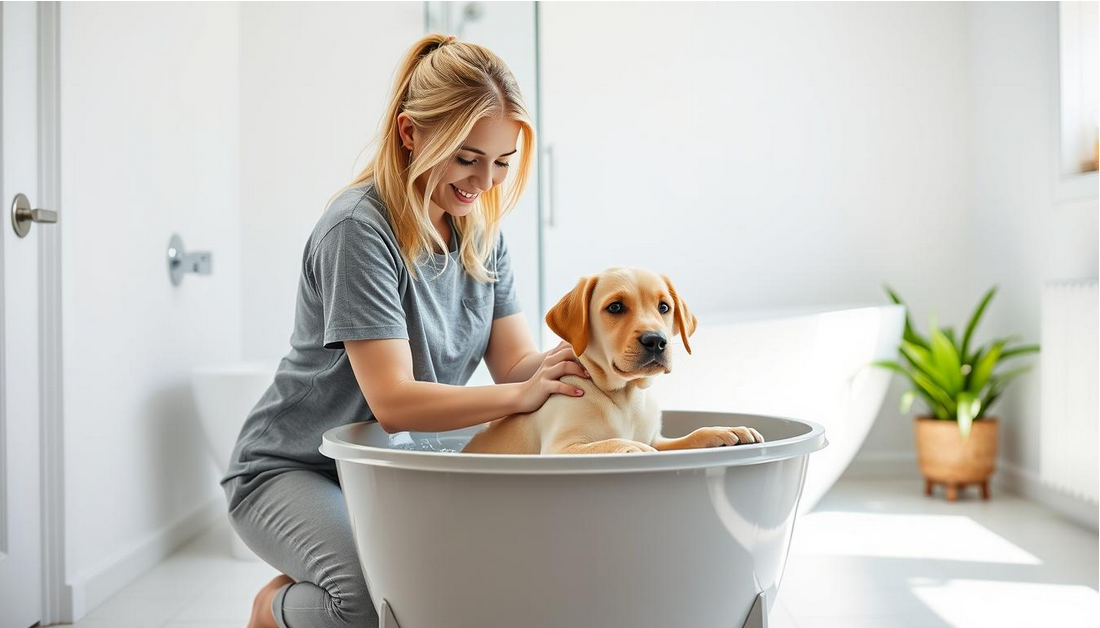
Dental Care Routines
Dental care is another vital aspect of your pet’s hygiene. Regular brushing can help prevent tartar buildup, gum disease, and bad breath. Use a toothbrush and toothpaste specifically designed for pets, as human toothpaste can be harmful to them. Start with short sessions to help your pet get accustomed to the process.
The frequency of dental brushing depends on your pet’s age, breed, and individual needs. Generally, daily brushing is ideal, but even a few times a week can be beneficial. Additionally, consider incorporating dental chews or toys into your pet’s routine to help maintain their oral health.
Paw Maintenance and Protection
Paw maintenance involves regular checks and cleaning, especially after walks. Dirt, debris, and chemicals can accumulate between your pet’s paw pads, causing irritation or infections. Cleaning your pet’s paws after walks is essential, particularly if they’ve been walking on treated surfaces or in areas with salt or chemicals.
Cleaning After Walks
To clean your pet’s paws, use a damp cloth or pet-safe wipes. Pay particular attention to the areas between the paw pads and the paw pad surfaces. For more thorough cleaning, consider using a mild soap specifically designed for pets.
Paw Balms for Cracked Pads
If your pet has cracked or dry paw pads, consider using a paw balm. These products help moisturize and protect the paw pads, reducing the risk of cracking and irritation. Look for balms containing natural ingredients like beeswax, shea butter, or coconut oil.
By incorporating these specialized hygiene practices into your pet care routine, you can help ensure your pet’s overall health and comfort. Regular ear cleaning, dental care, and paw maintenance are crucial for preventing common issues and keeping your pet happy and healthy.
Top Pet Hygiene Products Worth Investing In
Investing in top-notch pet hygiene products is a step towards ensuring your pet leads a healthy life. With numerous options available, it’s essential to choose products that cater to your pet’s specific needs.
Complete Grooming Kits
A complete grooming kit is a must-have for any pet owner. These kits usually include a variety of tools such as brushes, combs, nail clippers, and sometimes even shampoos. Top-rated pet grooming kits can simplify your grooming routine and ensure your pet looks and feels their best.
Quick Clean Solutions
For those times when a full bath isn’t possible, quick clean solutions come in handy. These include pet wipes and deodorizing sprays.
Pet Wipes
Pet wipes are convenient for cleaning your pet’s paws, face, and body. They are especially useful after outdoor activities or when traveling.
Deodorizing Sprays
Deodorizing sprays can instantly freshen up your pet, eliminating odors between baths. Look for sprays that are gentle on the skin and free from harsh chemicals.
Organic and Natural Product Options
For pet owners who prefer a more natural approach, organic and eco-friendly pet hygiene products are a great choice. These products are made from natural ingredients and are biodegradable, reducing environmental impact.
| Product Type | Key Features | Benefits |
|---|---|---|
| Complete Grooming Kits | Includes various grooming tools | Simplifies grooming routine |
| Pet Wipes | Convenient, portable | Quick cleanups, travel-friendly |
| Deodorizing Sprays | Instantly freshens, odor-eliminating | Gentle on skin, pleasant scent |
| Organic/Natural Products | Made from natural ingredients, biodegradable | Eco-friendly, gentle on pets |
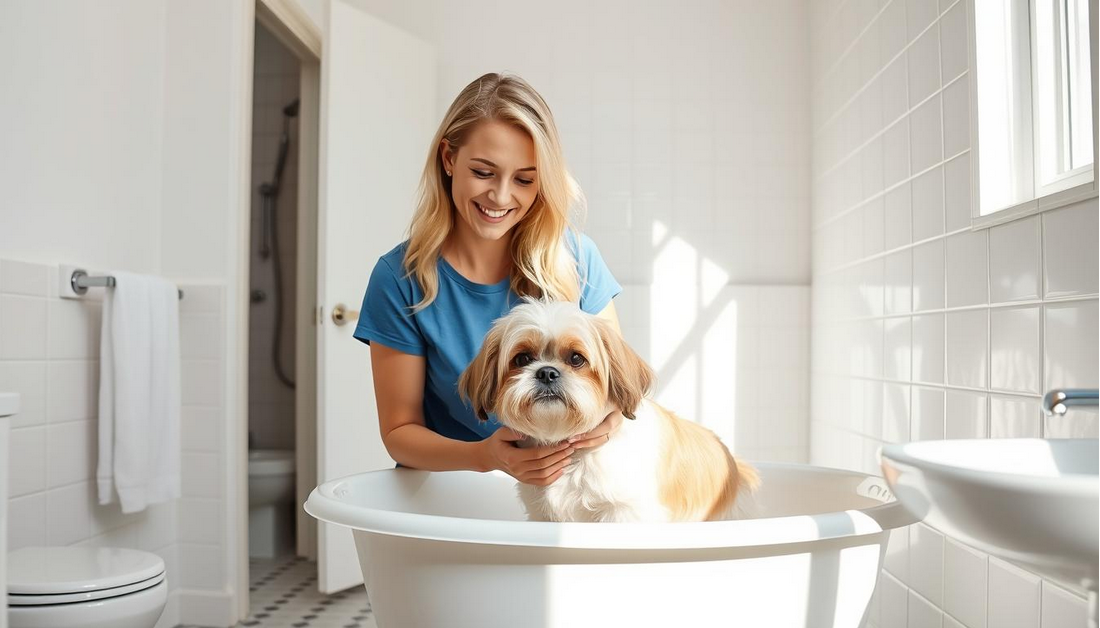
Professional vs. DIY Grooming
When it comes to grooming, pet owners have two primary options: professional grooming services or DIY grooming at home. Both approaches have their advantages and disadvantages, which are crucial to consider when deciding what’s best for your pet.
When to Seek Professional Help
If your pet has specific grooming needs that you’re not equipped to handle, such as intricate coat styling or nail trimming, it’s best to seek professional grooming services. Professionals have the training and equipment to handle these tasks safely and effectively.
Setting Up a Home Grooming Station
For those who prefer DIY grooming, setting up a home grooming station is essential. This includes investing in the right tools, such as brushes, combs, and nail clippers, and creating a comfortable space for your pet to be groomed.
Mobile Grooming Services
Another option to consider is mobile grooming services, which bring professional grooming to your doorstep. This can be particularly convenient for pets that are anxious or stressed by travel.
Cost Comparison and Considerations
When deciding between professional and DIY grooming, cost comparison is a significant factor. While professional grooming offers expertise, it can be more expensive. DIY grooming, on the other hand, requires an initial investment in equipment but can be more cost-effective in the long run.
| Grooming Aspect | Professional Grooming | DIY Grooming |
|---|---|---|
| Cost | Higher upfront cost, variable recurring costs | Initial investment in equipment, low recurring costs |
| Expertise | Highly trained professionals | Dependent on owner’s knowledge and skill |
| Convenience | Convenient for pet owners, especially with mobile services | Requires owner’s time and effort |
Ultimately, the decision between professional and DIY grooming depends on your pet’s specific needs, your budget, and your personal preferences. By weighing these factors, you can make an informed decision that ensures your pet receives the best possible care.
Situational Pet Hygiene
Situational pet hygiene requires adapting to different circumstances to keep your pet clean and healthy. Whether you’re traveling, living in an apartment, managing multiple pets, or caring for a pet with special needs, each situation presents unique hygiene challenges.
Travel Hygiene Tips
When traveling with your pet, maintaining their hygiene is crucial. Pack essential grooming items like a portable brush, pet wipes, and a travel-sized shampoo. For long trips, consider a pet-friendly travel kit that includes hygiene products.
| Travel Hygiene Essentials | Description | Benefits |
|---|---|---|
| Portable Brush | Compact brush for on-the-go grooming | Reduces shedding and prevents matting |
| Pet Wipes | Pre-moistened wipes for quick cleanups | Convenient for cleaning paws and fur |
| Travel-Sized Shampoo | Compact shampoo for bathing on the go | Saves space and ensures cleanliness |
Apartment Living Solutions
Living in an apartment can present unique hygiene challenges due to limited space. Regular grooming is essential to prevent shedding and hair accumulation. Utilize indoor grooming tools like lint rollers and vacuum cleaners designed for pet hair.
Managing Hygiene for Multiple Pets
Caring for multiple pets requires a strategic hygiene plan. Create a schedule for grooming and hygiene tasks to ensure each pet receives the necessary care. Consider using multi-pet grooming tools to streamline the process.
Hygiene for Pets with Special Needs
Pets with special needs, such as those with skin conditions or disabilities, require tailored hygiene approaches. Consult with a veterinarian to develop a customized hygiene plan that addresses your pet’s specific needs.
By adapting to these situational hygiene challenges, you can ensure your pet remains clean, healthy, and happy in any circumstance.
Conclusion: Maintaining Your Pet’s Hygiene for a Happier, Healthier Life
Maintaining pet hygiene is crucial for their overall health and happiness. By implementing the tips and practices outlined in this article, pet owners can significantly improve their pets’ well-being.
Regular grooming, bathing, and hygiene practices not only keep pets clean but also prevent health issues. Understanding the importance of pet hygiene and incorporating it into daily routines can lead to a stronger bond between pets and their owners.
By prioritizing pet hygiene, owners can ensure their pets lead happier, healthier lives. This includes being mindful of their pets’ specific needs, using the right products, and staying consistent with their hygiene routines.
Investing time and effort into maintaining pet hygiene is essential for any responsible pet owner. By doing so, owners can enjoy a cleaner, healthier, and more loving relationship with their pets.
FAQ
How often should I bathe my dog?
The frequency of bathing depends on factors such as breed, age, and lifestyle. Generally, dogs need a bath every one to three months, but some may require more frequent bathing due to skin conditions or allergies.
What is the best way to bathe a cat?
Bathing a cat can be challenging, but it’s essential to be gentle and patient. Use a cat-specific shampoo, and consider a waterless cleaning method or a dry shampoo if your cat is particularly resistant to water.
How can I remove tear stains from my dog’s face?
To remove tear stains, gently clean the area with a damp cloth and a small amount of dog-specific shampoo or a tear stain remover. Be sure to avoid getting any soap or shampoo in your dog’s eyes.
What are some signs of poor pet hygiene?
Signs of poor pet hygiene include strong body odor, matting or tangling of fur, dirty ears, and visible dirt or debris on the coat or paws. Regular grooming can help identify these issues early on.
Can I use human shampoo on my pet?
No, human shampoo is not suitable for pets. Human shampoo can be too harsh for their skin, and the pH level may not be compatible with their skin’s natural pH. Always use a pet-specific shampoo.
How do I clean my dog’s ears?
To clean your dog’s ears, use a dog ear cleaner and cotton balls. Gently wipe away any debris or wax, being careful not to insert the cotton balls into the ear canal.
What are some benefits of regular grooming?
Regular grooming provides numerous benefits, including reduced shedding, prevention of matting and tangling, and early detection of skin issues or other health problems. It also strengthens the bond between you and your pet.
How can I keep my pet’s teeth clean?
To keep your pet’s teeth clean, brush their teeth regularly with a pet-specific toothbrush and toothpaste. You can also provide dental chews or toys to help reduce tartar and plaque.
What are some common pet grooming mistakes to avoid?
Common grooming mistakes include using the wrong brush or comb for your pet’s coat type, cutting your pet’s nails too short, and not being gentle when handling sensitive areas. Be sure to research and understand the best practices for your pet’s specific needs.
Can I groom my pet at home, or should I seek professional help?
While some grooming tasks can be done at home, others may require professional assistance, especially if your pet has specific needs or requires complex grooming procedures. Consider your pet’s individual needs and your own comfort level when deciding.

